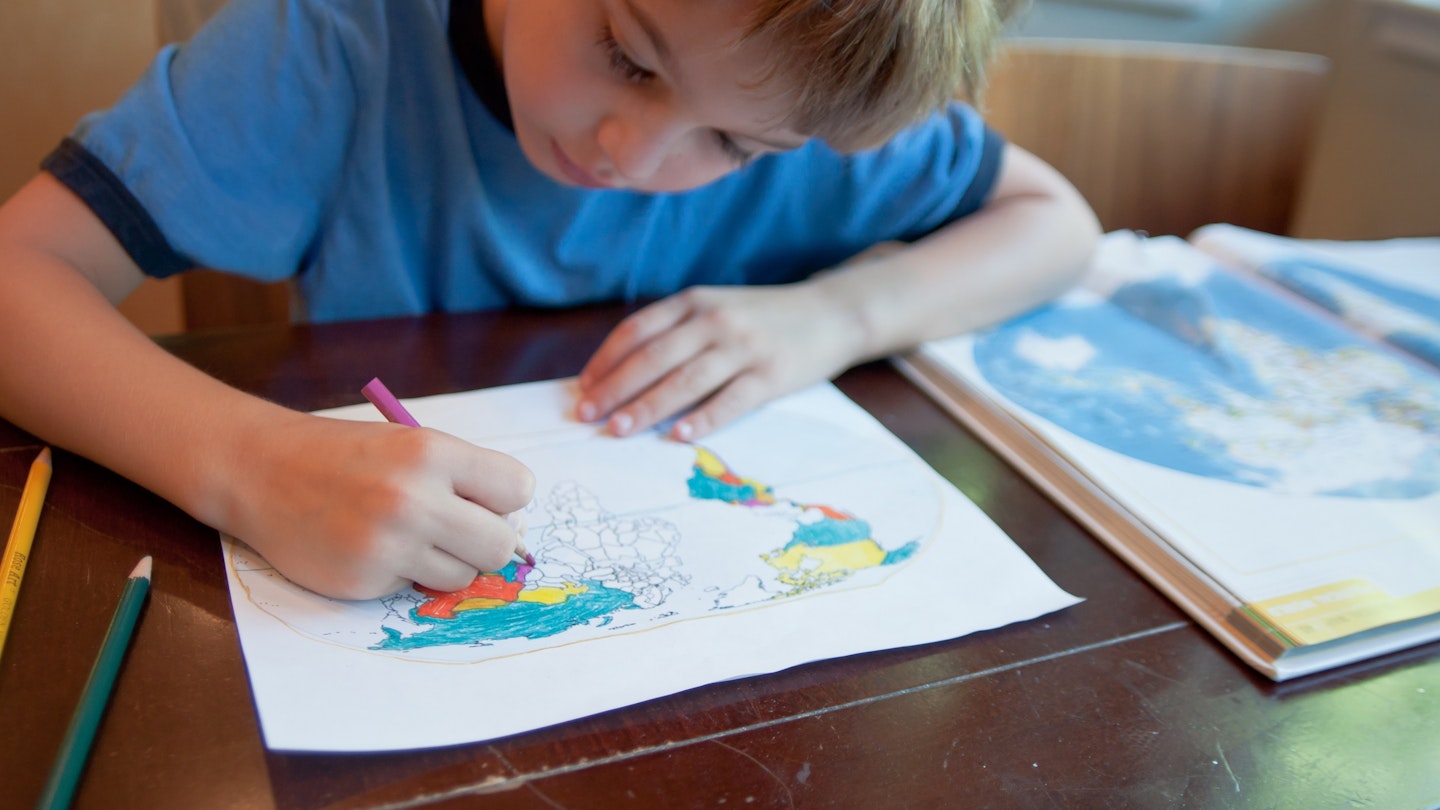Do you want to travel the world with your kids but find yourselves limited by finances, school holidays, and increasingly, worries about your family’s environmental impact? While you may struggle to completely replicate the incredible experience of travel, there are plenty of ways you can introduce your kids to the world without even leaving your home. As Marcel Proust said, “The real voyage of discovery consists not in seeking new landscapes, but in having new eyes.” Use these ideas to have family adventures from home while leaving no carbon footprint.
1. Read Fact Books and Atlases
From Dr Seuss to Percy Jackson, Harry Potter, and beyond, fiction is a fantastic way to take kids on a journey to faraway places. However, when it comes to properly learning about the world, nothing beats a really good atlas or fact book. Thankfully, any decent bookshop has a wealth of beautifully illustrated, carefully researched, and well-designed children’s non-fiction books about our wonderful world.
We’re not just talking about our own range of GoTravelDaily Kids books here. Keep younger children busy with Usborne’s Lift the Flap Picture Atlas. Older kids will love exploring geography in the children’s version of Prisoners of Geography. Maps is another one to treasure, featuring detailed pages of cultural information overlaid onto regional maps.
2. Get Crafty and Creative
Toddlers exploring new lands in cardboard boats, younger children fashioning landmarks with play dough, wooden bricks, or Lego, and tweens and teens crafting laser-cut models or 3D puzzles from kits; there are myriad ways to create something fun together that teaches them about the world. For inspiration, our Cardboard Box Creations offers lots of ideas for junk modelling. The Brick City series shows how to create landmarks from New York, London, and Paris using Lego.
Both Lego’s Architecture series and CubicFun’s three-dimensional models are popular with older children, offering a delightful way to bond. Alternatively, encourage your kids to create their own maps or draw landmarks, such as colouring in a world map on a doodle pillowcase for a surprisingly educational and mindful activity.
3. Take a Culinary Tour
Is there a better way to get to know another culture than through its food? If you can’t experience these new tastes first-hand, why not bring them into your kitchen? Utilize kids’ cookbooks like The Around The World Cookbook or follow the BBC show My World Kitchen, where children from different countries share how to make typical dishes.
Make it even more fun by turning your kitchen into a local café or street food hut, complete with a menu (and prices in the local currency), music, and appropriate cutlery and crockery. Starting simple with a gingham tablecloth and croissants, you can eventually progress to making sushi for a true Japanese experience.
4. Dance to Kid-Friendly Tunes from Around the World
Put on some tunes from various global cultures and have a dance party. You can even select a country to focus on and learn a corresponding dance using inspiration from YouTube. This is a fun way to engage in cultural appreciation through movement.
5. Try Language Apps and Online Quizzes
Thanks to modern technology, there are plenty of opportunities to learn while having fun. Apps such as Stack the States or Stack the Countries, Flags of the World, and Duolingo provide engaging educational experiences. Moreover, there are numerous virtual reality options for exploring global geography. Just ensure you spend time with your kids on these devices to guide their learning journey.
6. Get the Television On
While it’s recommended to limit screen time for children, there’s no denying the educational value that can come from watching engaging content. Family movie nights with themed snacks can provide the chance to transport everyone to another world for a couple of hours. Consider films like Indiana Jones showcasing the Middle East, Frozen featuring Scandinavian culture, or Ratatouille highlighting Paris.
Common Sense Media offers extensive lists of educational TV shows for kids, with series such as Planet Earth and Nature being ideal starting points. For younger children, the British series Go Jetters is also educational and entertaining, teaching about significant landmarks across the globe.
7. Complete a Map Jigsaw
As much as we appreciate technology for learning about the world, nothing can compare to spending quality time together on traditional activities, such as working on a jigsaw puzzle. This activity fosters teamwork and communication. For younger kids, choose a world map puzzle or simple animal pairs, providing the perfect platform for discussing what they observe. Older children may enjoy larger puzzles featuring world landmarks, like this 1000-piece one from Ravensburger.
8. Try Your Luck with World-Themed Board Games
Games like Risk help develop a sense of geography in older children through playful competition. Train enthusiasts will adore Ticket to Ride, available in various regional editions. Additionally, you can explore global flags with Flags of the World or test geographical knowledge with family editions of Trivial Pursuit.
9. Get Fancy with Some Dress Up
Finally, one of the most enjoyable activities is dressing everyone up as explorers (or other characters) and searching your home for objects that represent different cultures. Reconvene and allow each child to share what they know about their chosen item, create a narrative around it, or use it as a starting point for research.





